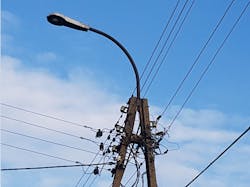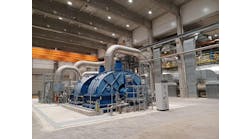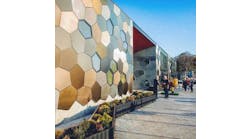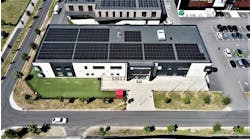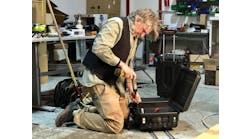Yasmin Ali, a London-based writer for Microgrid Knowledge, offers insight into the transformation occuring on the UK grid, as distributed energy increasingly gives consumers an opportunity to become power producers.
A county in the southwestern tip of England is trialing technology that could have broad implications for the way power is bought and sold in the UK.
Under the Cornwall Local Energy Market project, commercial and residential third party flexibility service providers have signed up to a virtual marketplace. The platform allows participants to buy and sell flexibility to the grid and the wholesale energy market. Flexibility services can be provided by modifying generation or consumption patterns in reaction to an external signal, such as a change in power price.
Described as a neutral market, this model is a key feature of the UK’s grid transition to a new world where consumers not only take power from the grid but also supply it via solar panels and other distributed energy devices.
Open networks project
The representative for transmission and distribution electricity and gas grid operators in the UK and Ireland, the Energy Networks Association, is coordinating the transformation of Distribution Network Operators (DNOs) from passive to active players.
Up until recently, DNOs, responsible for managing the UK’s electricity distribution assets, owned and maintained these assets and allowed energy to flow in one direction without any active management.
The project, called Open Networks, is a significant collaboration between energy transmission and distribution grids, and other key energy industry stakeholders.
From distribution network to distribution system operators
Over the past ten years, DNOs have increasingly actively managed networks. They are operating smart equipment and enabling more energy flows in multiple directions. Many DNOs operate systems that automatically turn generation on or off based on local requirements.
DNOs have taken the first steps towards becoming Distribution System Operators (DSOs), the term given to a model where the operator takes a more active role in managing local electricity generation and use. But so far, the approach has been inconsistent.
Introducing standardization
Currently, different DNOs are covering different aspects of transitioning to the role of DSOs. There is no common agreement on issues like visibility of data. Open Networks, launched at the start of 2017, brings together all of the UK’s transmission and distribution grid operators to agree a common way forward.
Decisions must be made on issues like the types of services third parties can provide, visibility of data, and common ways of working for neutral market facilitation.
“What that means is that the DSOs own the assets, operate a smart grid, and they enable new types of markets to play on the electricity [grid] network,” Randolph Brazier, head of innovation at the Energy Networks Association explained. “Whether that is local flexibility markets or peer to peer trading markets, it doesn’t really matter but they essentially facilitate those new markets in a smart way.”
As different geographical regions have differing energy requirements, localized rather than centralized markets are likely to be developed, as modeled by Cornwall. The key is to ensure a level of consistency across these markets.
Collaborative approach
The project was named Open Networks partly to reflect the approach and intention to work with industry to design an electricity network that works for everyone.
“The key to this project, and the reason that it’s working well and delivering good results is collaboration,” Brazier said.
The UK’s six DNOs are partners in the project, as well as the transmission network companies. Alongside this, the project is supported by an advisory group formed of 45 industry experts from NGOs, academia, government, trade associations, community energy groups, code administrators, citizen’s advice groups, and any other group with an involvement in the energy industry.
Public consultation
A public consultation is currently in progress, seeking feedback on five models of potential future networks, referred to as ‘DSO Worlds’. Once this is complete, an independent impact analysis will be carried out on the models. The results from the public consultation and the analysis will be presented to the regulator at the end of 2018.
Following the final decision from the regulator, testing will begin and the successful DSO model will be rolled out over a period of ten years.
To fully decarbonize energy systems, the UK must actively manage networks and utilize third parties. Homeowners and local businesses can provide services like solar and storage to system operators. This will minimize costs for networks and encourage the deployment of the most efficient and effective solutions, maximizing benefits for the users.
Track news about changes in the UK grid with the rise of distributed energy. Subscribe to the free Microgrid Knowledge newsletter.
